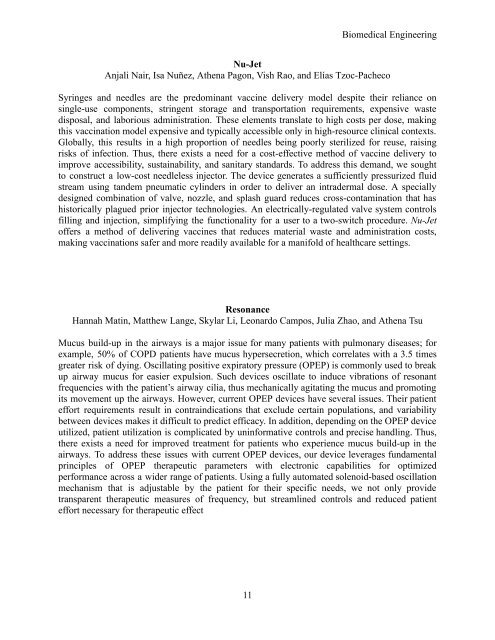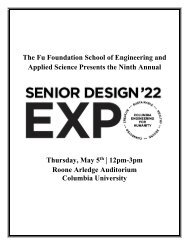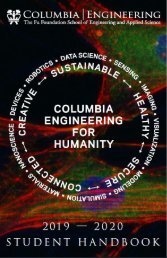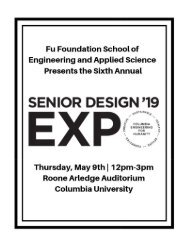You also want an ePaper? Increase the reach of your titles
YUMPU automatically turns print PDFs into web optimized ePapers that Google loves.
Biomedical Engineering<br />
Nu-Jet<br />
Anjali Nair, Isa Nuñez, Athena Pagon, Vish Rao, and Elías Tzoc-Pacheco<br />
Syringes and needles are the predominant vaccine delivery model despite their reliance on<br />
single-use components, stringent storage and transportation requirements, expensive waste<br />
disposal, and laborious administration. These elements translate to high costs per dose, making<br />
this vaccination model expensive and typically accessible only in high-resource clinical contexts.<br />
Globally, this results in a high proportion of needles being poorly sterilized for reuse, raising<br />
risks of infection. Thus, there exists a need for a cost-effective method of vaccine delivery to<br />
improve accessibility, sustainability, and sanitary standards. To address this demand, we sought<br />
to construct a low-cost needleless injector. The device generates a sufficiently pressurized fluid<br />
stream using tandem pneumatic cylinders in order to deliver an intradermal dose. A specially<br />
designed combination of valve, nozzle, and splash guard reduces cross-contamination that has<br />
historically plagued prior injector technologies. An electrically-regulated valve system controls<br />
filling and injection, simplifying the functionality for a user to a two-switch procedure. Nu-Jet<br />
offers a method of delivering vaccines that reduces material waste and administration costs,<br />
making vaccinations safer and more readily available for a manifold of healthcare settings.<br />
Resonance<br />
Hannah Matin, Matthew Lange, Skylar Li, Leonardo Campos, Julia Zhao, and Athena Tsu<br />
Mucus build-up in the airways is a major issue for many patients with pulmonary diseases; for<br />
example, 50% of COPD patients have mucus hypersecretion, which correlates with a 3.5 times<br />
greater risk of dying. Oscillating positive expiratory pressure (OPEP) is commonly used to break<br />
up airway mucus for easier expulsion. Such devices oscillate to induce vibrations of resonant<br />
frequencies with the patient’s airway cilia, thus mechanically agitating the mucus and promoting<br />
its movement up the airways. However, current OPEP devices have several issues. Their patient<br />
effort requirements result in contraindications that exclude certain populations, and variability<br />
between devices makes it difficult to predict efficacy. In addition, depending on the OPEP device<br />
utilized, patient utilization is complicated by uninformative controls and precise handling. Thus,<br />
there exists a need for improved treatment for patients who experience mucus build-up in the<br />
airways. To address these issues with current OPEP devices, our device leverages fundamental<br />
principles of OPEP therapeutic parameters with electronic capabilities for optimized<br />
performance across a wider range of patients. Using a fully automated solenoid-based oscillation<br />
mechanism that is adjustable by the patient for their specific needs, we not only provide<br />
transparent therapeutic measures of frequency, but streamlined controls and reduced patient<br />
effort necessary for therapeutic effect<br />
11








